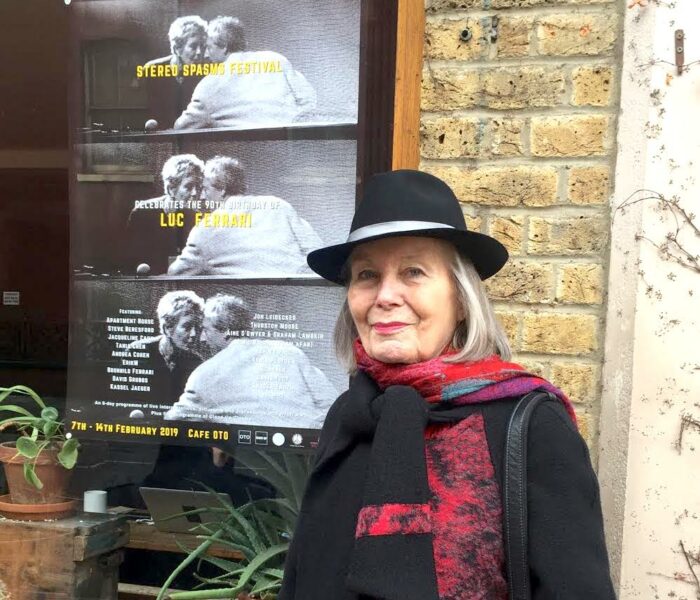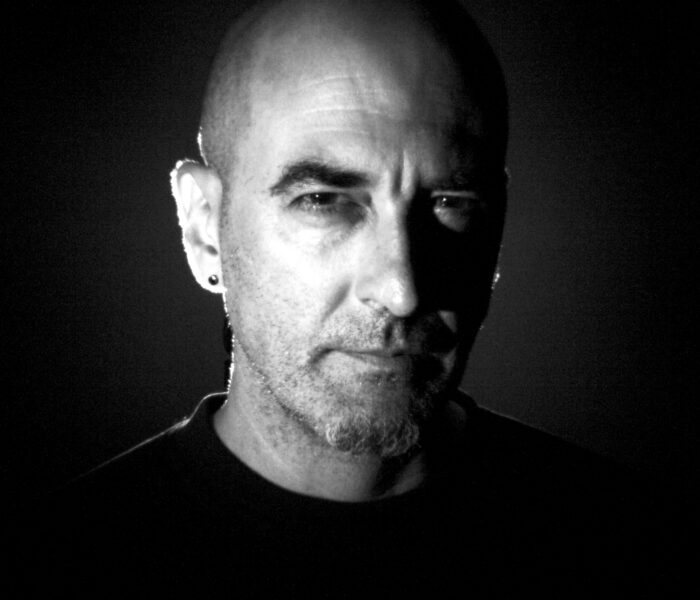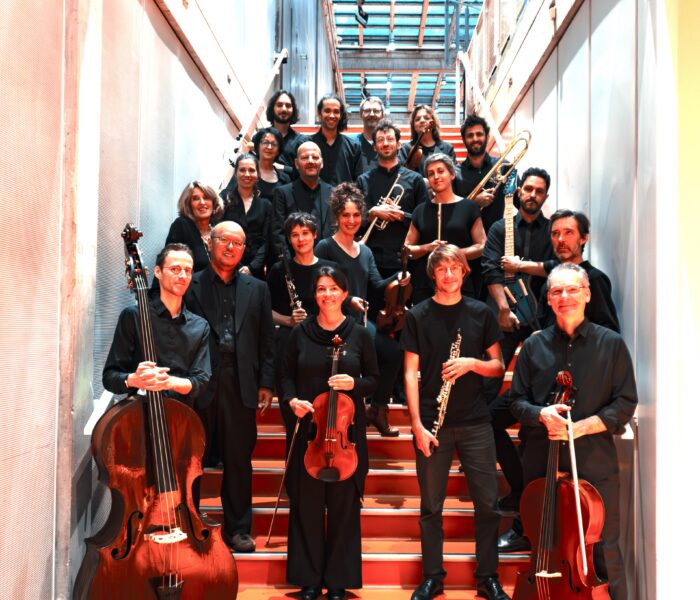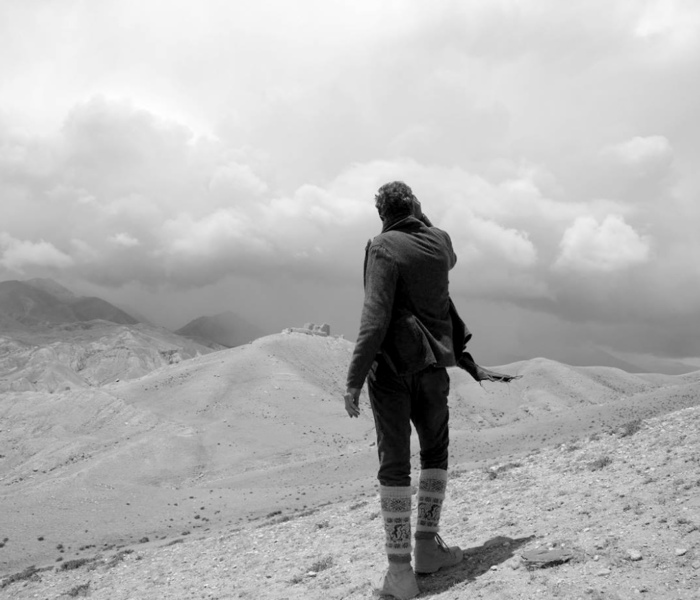L’une vient de la sculpture, l’autre de l’acousmatique ; la première s’attache à explorer les phénomènes inaudibles de la nature, l’autre, les phénomènes, inouïs, du son. Jana Winderen et Natasha Barrett ont en commun d’utiliser le field recording en raconteuses d’histoires hors paires.
L’océan de sons de Jana WInderen
A l’origine, la Norvégienne Jana Winderen (née en 1965) comptait se consacrer à la sculpture. C’est dans ce dessein qu’après avoir étudié les sciences (mathématiques, chimie, biochimie et écologie piscicole) à Oslo, elle part obtenir son diplôme d’art au prestigieux Goldsmiths College de Londres. Mais très vite, elle n’a plus voulu créer d’objets : soucieuse de minimiser son empreinte carbone, cette fille et petite-fille d’écologistes convaincus n’avait pas envie d’encombrer davantage le monde, mais plutôt de « travailler avec ce matériau immatériel qu’est le son », comme elle l’expliquait en mai dernier pour Forbes. Des objets, elle n’a certes pas complètement cessé d’en produire : ses CD sont publiés, comme ceux de Chris Watson, par le label britannique Touch, terre d’élection – au même titre que son alter ego autrichien, Editions Mego – des field recordists patentés. Mais au moins le son voyage-t-il, lui : « L’une des raisons de travailler avec le son est qu’il vous permet de toucher un plus large public. Je produis de petits objets, mais avec eux je peux toucher beaucoup de gens. Pour moi, il est important de pouvoir vous raconter l’histoire, afin que vous puissiez la raconter à votre tour… »
La dimension narrative est essentielle dans la manière dont Jana Winderen compose ses pièces, qu’il s’agisse de disques ou d’installations sonores. Cela encore la rapproche de son aîné Chris Watson, avec qui elle a d’ailleurs collaboré sur plusieurs projets par le passé, et avec lequel elle a surtout en commun d’avoir fait du field recording le matériau exclusif de son travail – et du field recording « environnemental » en particulier. Environnemental, au sens où l’un comme l’autre s’attachent principalement à capter les sons de la biosphère, dans des environnements naturels rarement fréquentés par l’homme, voire presque inaccessibles.
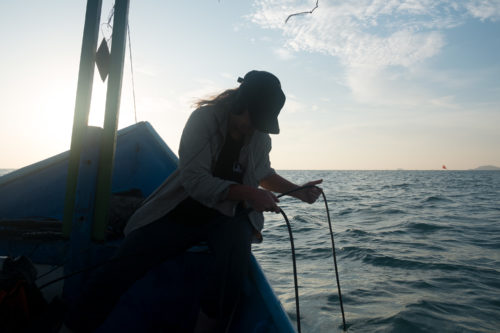

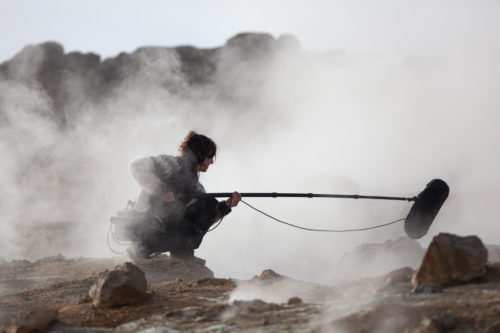
Dans le cas de Jana Winderen, fascinée par l’océan depuis l’enfance, ces espaces sont d’abord ceux des fonds marins. Topographies invisibles, mondes inaudibles au commun des oreilles, dérobés au regard. Ainsi la Norvégienne est-elle, à force de sillonner le globe, passée maître dans la maîtrise de l’hydrophone, qu’elle arrive à immerger à 90 mètres de profondeur. Ainsi l’histoire qu’elle a à cœur de transmettre est-elle celle, pas très gaie, de l’anthropocène, et de la fragilité grandissante de l’écosystème marin ; des ravages causés, par exemple, par la pollution sonore des bateaux qui sont de plus en plus nombreux à sillonner les mers… Mais plutôt qu’à dénoncer, Jana Winderen, s’attache avant tout à créer. Après avoir beaucoup cherché, étudié et documenté. Si elle s’est formée en biologie marine, c’est pour être à même de dialoguer avec les scientifiques qui vont l’aider à préparer ses expéditions (des expéditions qui, elle-mêmes, contribuent parfois à faire avancer la recherche sur certaines espèces). Au point d’être capable de distinguer le son d’un crabe de celui d’une crevette pistolet – pour citer deux spécimens de décapodes, cette espèce de crustacés à cinq paires de pattes, généralement des charognards, dont le monde mystérieux lui a inspiré The Noisiest Guys Ont The Planet son premier disque, paru en 2009.
Du Pôle Nord au Ghana, des eaux de l’Orne à celles du Panama, on peut d’ailleurs écouter sur son site Internet les enregistrements de ces « field trips » qu’elle réalise avec un matériel dernier cri : trips généralement solitaires, souvent aventureux, qu’elle décrivait comme « un processus solitaire d’intense concentration, constamment à l’écoute de ce se passe et me déplaçant au gré de ce que j’entends ». A Ed Benndorf et Tobias Fisher , elle en parlait comme d’« une expérience physique, escalader un glacier, être sur bateau dans la nuit noire, éveillé pendant que la plupart des gens sont en train de dormir… » Le field recording a à voir avec l’attente, le temps qui s’écoule et notre disposition à s’abandonner à lui.
De manière générale, ce qui intéresse Jana Winderen, au-delà des mers, ce sont les mondes cachés. Au fond d’une crevasse ou d’une fourmilière, sous la glace de la banquise ou sous l’écorce d’un arbre, en montagne ou en forêt, elle aime traquer les sons hors de portée de l’oreille et affectionne les endroits inaccessibles, ceux où, faute de voir l’origine du son, elle enregistre à l’aveugle. Les mondes invisibles mais audibles. En entendant la façon, dont, dans ses disques – citons encore l’extraordinaire Evaporation (2014) et Cloître (2017, live en duo avec le musicien électronique Thomas Köner) – ou ses installations immersives (c’est le cas de le dire), elle spatialise l’écoute, agençant ses prises de son de terrain en une série de couches, du spectre le plus large au plus resserré, on se rappelle qu’à l’origine, Jana Winderen comptait se consacrer à la sculpture…
Le contrepoint spatial de Natasha Barrett
Au contraire de chez Jana Winderen, on entend souvent des présences humaines dans les pièces « environnementales » de la Britannique Natasha Barrett. Ce qui ne veut pas dire, bien au contraire, qu’on y perde moins ses repères. Vivant elle aussi en Norvège, où elle s’est installée il y a plus de 20 ans, Natasha Barrett (née en 1972) partage également son travail entre composition et concerts, installations sonores (parfois monumentales) et musique pour l’image, la danse ou le théâtre. Elle a cependant un tout autre background, puisqu’elle vient de la musique acousmatique, qu’elle a étudiée à Londres et Birmingham – elle fut plusieurs fois lauréate, dans les années 1990, du Concours de musique électroacoustique de Bourges, entre autres. Et son œuvre s’étend bien au-delà du field recording, qui englobe aussi bien des pièces acoustiques que des pièces mixtes ou purement acousmatiques. Sans parler de son travail de pédagogue et d’interprète, puisque Natasha « diffuse » régulièrement en live les œuvres d’autres compositeurs.
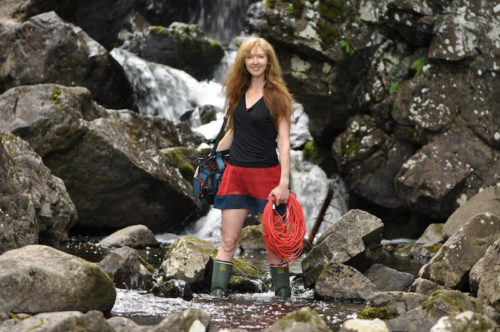

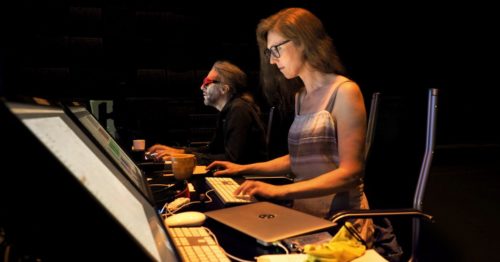
Comme chez Jana Winderen, il est question de lieux et de temps (celui qu’il faut passer à enregistrer patiemment, inlassablement, avant que soudain, le miracle n’advienne). Mais si la première est plutôt ambient, la seconde serait plutôt… space. Le travail de Natasha Barrett explore en effet, avec rigueur et beaucoup de finesse, toutes les possibilités systèmes de diffusion spatialisés, et notamment du dispositif Ambisonic. Au point d’avoir forgé la notion la notion de « contrepoint spatial »… Autant que sa consœur en revanche, la Britannique affectionne les histoires. Elle aime tenir son auditeur en haleine. Sa musique est tout autant narrative, mais dans une tout autre veine. A la fois plus fictionnelle et plus abstraite, très cinématographique. Michel Chion a parlé de « tournage sonore » pour désigner la prise de son ; elle utilise quant à elle souvent le terme de « sound exposure » (« exposition sonore ») pour évoquer ses pièces. Il y a en tout cas du David Lynch, du Stanley Kubrick dans Innermost, la pièce d’à peine 20 minutes qu’elle vient de publier sur un disque partagé avec son aînée Beatriz Ferreyra).
Ici comme souvent chez elle, cela débute de manière figurative, naturaliste, avec des voix, des sons de foules ou de groupes, souvent aussi des ambiances de plage norvégienne, de rires et de jeux. Et puis peu à peu, imperceptiblement, les contours s’altèrent, se dilatent et se tordent, les field recordings se font malléables matières, et c’est comme si l’on pénétrait dans une autre dimension – ce que ne fait naturellement qu’amplifier la spatialisation du son (même au casque, l’effet est saisissant). La musique de Natasha Barrett est hantée par beaucoup d’esprits, de fantômes. Par les échos d’autres musiques, et même parfois de rythmes. Sombre, angoissante au point de faire songer par moments à celle de ses compatriotes post-industriels de Coil… L’œuvre de Natasha Barrett est un cas bien singulier d’inquiétante étrangeté.
Les mêmes qualités – derrière des accents quasi gothiques, une poésie finalement « ferrarienne » – se retrouvent sur le disque 2 de son album Peat+Polymer (2014), entièrement consacré au field recording, qui présente des pièces ou des soundwalks enregistrés entre le Pérou, la Norvège et la Chine :
Dans sa fascinante série des Microclimates, elle part d’enregistrements de terrain réalisés à la faveur de longs séjours dans différents endroits de l’ouest de la Norvège, chaque source étant captée simultanément par trois micros (l’un proche, l’autre lointain, le troisième médian). Les paysages s’y trouvent comme mis en abîme, qui semblent s’animer, se dédoubler dans nos oreilles et même sous nos yeux… Quand ils ne se superposent pas, comme sur Subliminal Throwback publié en juin dernier, où Natasha Barrett mêle des prises de son réalisées en hiver et en été. Comme les Microclimates, cette œuvre existe sous forme à la fois d’installation et de pièce sonore. Et l’album en propose lui-même trois versions, dont deux enregistrements de l’installation fonctionnant in situ. L’intention de la compositrice y est clairement rséumée : « manœuvrer notre ‘écoute’ de manière à ce que nous puissions ‘entendre’… »
David Sanson



)
